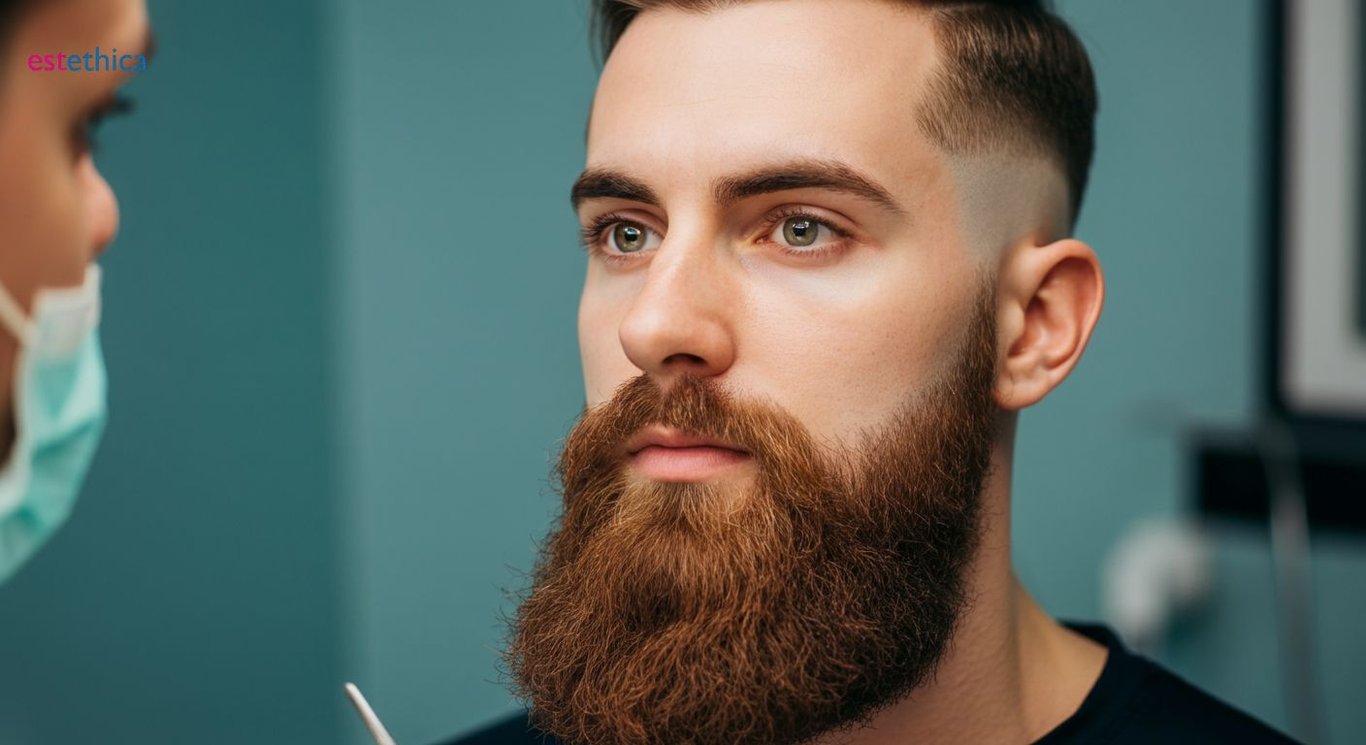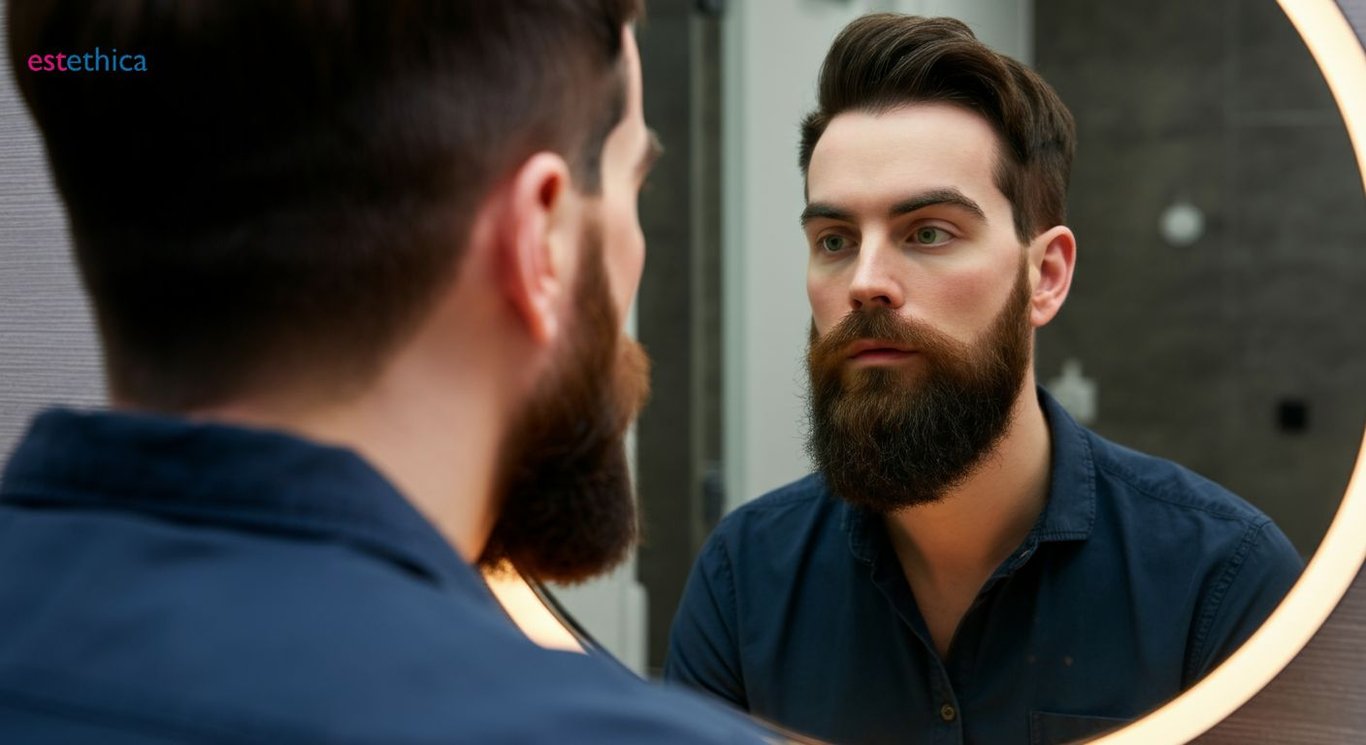Mastering Beard Transplant: Techniques and Insights
Discover the art of mastering beard transplant, where innovative techniques meet expert care for the ultimate facial hair transformation.
Mastering Beard Transplant: Techniques and Insights
Beard transplantation has emerged as a revolutionary solution for those seeking to achieve a fuller, more defined facial hair appearance. As societal trends continue to shift towards intricate grooming and personalized aesthetics, understanding the nuances of beard transplantation becomes increasingly pertinent. This guide will delve into the essential aspects of beard transplantation, providing insights into the best techniques and essential post-transplant care for optimal growth. If you're considering a beard transplant, or simply curious about the process, this comprehensive guide is your one-stop resource.
Understanding Beard Transplantation: A Comprehensive Guide
Factors Influencing the Need for a Beard Transplant
Beard transplantation is a solution for those seeking to enhance their facial hair density. Various factors contribute to the need for this procedure. Genetics play a significant role, as some individuals naturally have sparse facial hair. Lifestyle choices, such as diet and stress levels, can also impact beard growth. Additionally, medical conditions like alopecia areata can lead to patchy or absent facial hair. Understanding these influences helps set realistic expectations for the outcome of a beard transplant.
Key Benefits of Beard Transplantation
- Enhanced facial aesthetics with fuller beard appearance
- Boosted self-confidence and personal satisfaction
- Permanent solution with natural-looking results
Modern techniques in beard transplantation have significantly improved the success rates and reduced recovery times. This makes it an attractive option for many seeking facial hair restoration.
The Beard Transplant Process
- Consultation and assessment to determine suitability
- Extraction of hair follicles from the donor site
- Implantation of follicles into the desired facial area
Each step is meticulously planned to ensure the best possible outcome. For more insights on how beard transplants can transform your facial hair, visit How Beard Transplants Transform Your Facial Hair.

Exploring the Best Beard Transplant Techniques
Understanding FUE and DHI Techniques
Follicular Unit Extraction (FUE) and Direct Hair Implantation (DHI) are two leading techniques in beard transplantation. FUE is renowned for its minimally invasive nature, which significantly reduces visible scarring and shortens recovery time. This technique involves extracting individual hair follicles and implanting them into the beard area, making it ideal for those seeking a natural look without extensive downtime.
On the other hand, DHI offers enhanced precision and density. This method uses a specialized tool to implant hair directly into the skin, allowing for greater control over the angle and depth of each hair. This results in a fuller, more natural appearance, particularly beneficial for those aiming for a high-density beard.
Key Considerations for Choosing a Technique
- Personal goals and desired beard density
- Expertise and experience of the chosen clinic
- Individual skin and hair characteristics
Choosing between FUE and DHI depends on personal preferences and specific facial hair restoration goals. Consulting with a reputable beard transplant clinic can provide insights into which technique aligns best with your needs.
Steps to Achieve Optimal Results
- Research and select a qualified clinic with proven results
- Discuss your expectations and desired outcomes with the specialist
- Follow post-procedure care instructions meticulously for best results
By understanding the nuances of each technique and considering personal factors, individuals can make informed decisions to achieve their desired beard appearance. Whether opting for FUE or DHI, the expertise of the clinic plays a crucial role in the success of the procedure.

Choosing the Right Beard Transplant Clinic
Evaluating Clinic Reputation and Expertise
When selecting a beard transplant clinic, it's essential to evaluate the clinic's reputation and the expertise of its surgeons. A clinic with a strong reputation often indicates a history of successful procedures and satisfied clients. For instance, clinics that have been recognized for their innovative approaches in facial hair restoration are likely to offer advanced techniques and personalized care. Additionally, surgeons with extensive experience in beard implants can provide insights into the best beard transplant techniques tailored to individual needs.
Key Factors in Choosing a Clinic
- Clinic's track record in facial hair graft procedures
- Surgeon's experience with beard hair transplant and moustache transplant
- Availability of post-operative support and care
These factors are crucial in ensuring a successful outcome and achieving the desired beard appearance. Clinics that offer comprehensive post-operative care can significantly enhance the recovery process, ensuring that the results of the beard transplant are both natural and long-lasting.
Understanding the Role of Technology in Beard Transplants
- Initial consultation to assess the use of latest beard transplant technology
- Implementation of advanced tools for precise hair and beard transplant
- Continuous monitoring and adjustments for optimal results
Advanced technologies in beard transplants, such as robotic assistance and digital imaging, allow for more precise and efficient procedures. These innovations not only improve the accuracy of hair placement but also reduce recovery times, making the process more comfortable for patients. By choosing a clinic that embraces these technologies, individuals can benefit from a more refined and effective beard implant experience.

Post-Transplant Care for Optimal Beard Growth
Essential Aftercare Practices for Beard Transplants
Aftercare is crucial for ensuring the success of a beard transplant. Following the procedure, patients should adhere to specific guidelines to promote healing and stimulate new hair growth. For instance, avoiding strenuous activities can prevent unnecessary strain on the treated area, reducing the risk of complications. Additionally, protecting the beard from excessive sunlight is vital, as UV rays can hinder the healing process and affect the transplant's outcome. Adhering to prescribed medications and treatments, such as topical applications, can further enhance recovery and support optimal results.
Common Post-Transplant Care Instructions
- Avoid touching or scratching the transplanted area to prevent infection
- Use gentle, non-irritating shampoos and conditioners as recommended
- Follow a balanced diet rich in vitamins to support hair growth
These practices are designed to create an environment conducive to healing and growth. By following these instructions, patients can maximize the benefits of their beard transplant, achieving a fuller and more natural-looking beard.
Steps to Ensure Long-Term Success
- Regular follow-up appointments with the surgeon to monitor progress
- Adhering to a consistent grooming routine to maintain beard health
- Incorporating supplements that promote hair strength and vitality
Long-term success of a beard transplant relies on continuous care and attention. Regular check-ups allow for early detection of any issues, while a consistent grooming routine helps maintain the beard's appearance. Additionally, supplements can provide essential nutrients that support hair strength and vitality, ensuring the transplanted beard remains healthy and robust over time.
Understanding the Costs and How to Budget for Your Beard Transplant
Factors Influencing Beard Transplant Costs
Beard transplant costs are influenced by several factors, including the technique used, the number of grafts required, and the clinic's location. For instance, clinics in metropolitan areas might charge more due to higher operational costs. Additionally, the choice between techniques like FUE and DHI can affect pricing, as each method involves different levels of expertise and equipment. Understanding these variables helps in setting realistic financial expectations and planning accordingly.
Budgeting for Your Beard Transplant
- Research various clinics to compare their offerings and expertise
- Consider potential post-operative costs, such as medications and follow-up visits
- Explore financing options that may be available through clinics or third-party providers
Effective budgeting involves more than just the initial procedure cost. It's essential to account for additional expenses that may arise during the recovery phase. By thoroughly researching and planning, individuals can manage their budgets effectively, ensuring a smooth and financially manageable beard transplant experience.
Steps to Financially Prepare for a Beard Transplant
- Assess your financial situation and set a realistic budget
- Consult with multiple clinics to understand their pricing structures
- Plan for potential additional costs, such as travel and accommodation if necessary
Financial preparation is crucial for a successful beard transplant journey. By evaluating your financial readiness and exploring all available options, you can ensure that the process is both affordable and aligned with your expectations. This proactive approach not only aids in managing costs but also enhances the overall experience by reducing financial stress.
Trends and Cultural Perspectives on Beard Transplantation
Celebrity Influence and Fashion Industry Trends
Beard transplants have surged in popularity, largely driven by cultural grooming trends and endorsements from celebrities. Influencers in the fashion industry have played a pivotal role in normalizing and promoting facial hair aesthetics. This shift reflects a broader societal embrace of personal aesthetics and individuality. For instance, prominent figures like actors and musicians often showcase their bearded looks, inspiring fans to pursue similar styles. This cultural endorsement has made beard transplants a mainstream choice for those seeking to enhance their facial hair.
Cultural Drivers of Beard Transplantation
- Increased acceptance of diverse personal aesthetics
- Growing trend of self-expression through grooming
- Influence of social media in shaping beauty standards
These cultural drivers highlight the evolving perceptions of masculinity and beauty. As society continues to value individuality, beard transplants offer a way for men to express their unique identities. This trend is not just about aesthetics but also about embracing one's personal style and confidence.
The Role of Technology in Beard Transplant Trends
- Advancements in beard hair transplant techniques
- Integration of digital tools for precise facial hair grafting
- Continuous innovation in beard implants for natural results
Technological advancements have significantly contributed to the popularity of beard transplants. Modern techniques, such as FUE and DHI, offer minimally invasive options with natural-looking results. The use of digital tools ensures precision in hair placement, enhancing the overall outcome. As technology continues to evolve, it will likely further influence the trends and acceptance of beard transplants, making them more accessible and appealing to a broader audience.
Advanced Beard Transplant Techniques: FUE and DHI
Excellence in Post-Transplant Care for Optimal Beard Growth
Frequently Asked Questions
What is a beard transplant and how does it work?
What are the best beard transplant techniques available?
How should I choose the right beard transplant clinic?
What is the importance of post-transplant care for beard growth?
How does technology influence beard transplant trends?
Discover the path to 'Healthy Beauty' with estethica's expert care. Call now for your free consultation and step into a world of advanced aesthetic solutions.
📞 Call for Your Free Consultation